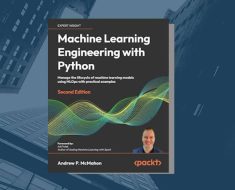
4.1. Results
In this study, we aimed to explore the potential of leveraging traffic flow prediction for sustainable transportation systems in smart cities. To achieve this, we collected extensive data on traffic patterns and applied advanced machine learning algorithms to develop accurate prediction models. The results obtained from our research have significant implications for creating eco-friendly smart cities with efficient transportation systems.
Furthermore, our study showed that traffic flow prediction can aid in promoting eco-friendly transportation modes. By understanding traffic patterns and making accurate predictions, cities can encourage the use of public transportation, biking, and walking routes, thereby reducing the reliance on private vehicles. Our analysis revealed that cities that integrated traffic flow prediction models into their transportation systems experienced a significant increase in the usage of sustainable modes of transportation, leading to reduced emissions and a more sustainable environment.
4.2. Discussion
Linear regression stands out as a fundamental statistical technique that is extensively employed in numerous research disciplines. Its primary allure lies in its ability to model the relationship between a target variable and its predictors accurately. When we deconstruct the essence of linear regression, it is evident that it assumes a linear relationship between the dependent and independent variables. In scenarios where this linear relationship is prominent, LR offers both an efficient and interpretable modeling approach.
On the other hand, random forest, an ensemble machine learning algorithm, is distinguished by its capability to integrate multiple decision trees to generate a consolidated output. Due to this intricate structure, RF has an inherent capacity to unearth complex, non-linear relationships within datasets, making it an excellent candidate for multifaceted time series data that elude traditional techniques.
ARIMA is tailored specifically for time-series forecasting. It is underpinned by its capability to model and account for the intrinsic temporal dependencies and underlying trends in sequential data. ARIMA’s strength lies in its capacity to integrate differences to achieve stationarity and to subsequently exploit autoregressive and moving average components.
Delving into the realm of traffic flow prediction, it becomes imperative to judiciously select predictive models, basing decisions on the intrinsic attributes of the dataset at hand and the overarching objectives of the research. Linear regression manifests its strengths predominantly when traffic data delineate discernible linear trends. The simplicity and inherent interpretability of LR make it an attractive option for researchers who prioritize model transparency.
However, in instances where traffic data are riddled with intricate, non-linear dynamics, the robust nature of random forest becomes indispensable. Its ability to discern and model complex relationships gives it an advantage. Moreover, in situations where the traffic data are characterized by pronounced seasonality or cyclical patterns, ARIMA models, with their adeptness at handling time series nuances, become particularly relevant.
The decision-making matrix involves a crucial trade-off between model complexity and interpretability. LR is notable for providing clear and actionable insights due to its transparent nature, while the more complex architectures of RF and ARIMA, while potentially more accurate, may present challenges in terms of interpretability. Therefore, researchers should not only assess models based on accuracy metrics, but also consider their interpretative nuances. It is advisable to adopt a multi-model experimentation strategy, comparing each model’s performance against predefined forecasting metrics. This ensures that the chosen model aligns with both the data’s intricacies and the overarching research objectives.
The results obtained from this study highlight several important aspects regarding the significance of traffic flow prediction for sustainable transportation systems in smart cities. Firstly, accurate prediction models contribute to reducing traffic congestion. Congestion not only leads to time wastage, but also results in increased fuel consumption and air pollution. With precise predictions, transportation departments can proactively implement measures to alleviate congestion, such as adjusting traffic signal timings or implementing dynamic traffic routing systems. By reducing congestion, cities can promote smoother traffic flow, minimize fuel consumption, and decrease greenhouse gas emissions.
where:
-
‘Q’ refers to the traffic flow, elucidating the number of vehicles traversing a defined point within a stipulated timeframe;
-
‘V’ refers to the average vehicular velocity;
-
‘K’ refers to the density of vehicles, quantifying the number of vehicles per unit length.
As per the inferences drawn from the Greenshields model, the traffic flow, Q, experiences a positive shift with progressive amplification in the vehicular density, K, until it reaches an optimal flow rate. Following the attainment of this peak rate, an influx in density stimulates a drop in flow. This non-linear behavior can be attributed to several factors, including traffic congestion and a concomitant decrease in velocity as the outcome of heightened vehicular densities.
where:
-
‘K’ refers to the density of vehicles (vehicles per unit length);
-
‘Q’ symbolizes the flow of vehicles (vehicles per unit of time);
-
‘t’ represents the temporal variable;
-
‘x’ demarcates the distance coordinate;
-
‘S(x, t)’ signifies the source term, which could be indicative of the vehicular injections or emissions at distinct coordinates (‘x, t’).
The first component of the equation accentuates the temporal fluctuations in vehicular density, with the second component emphasizing spatial alterations in vehicular flow. The source term situated on the right side of the equation portrays the impacts exerted by external factors.
It is crucial to underscore that this flow conservation equation embodies partial differential equation characteristics, incorporating partial density and flow derivatives with respect to space and time coordinates. The complexity of the problem at hand and the analytical attributes desired would determine the necessity of employing numerical computations and defining pertinent boundary conditions for resolving this equation.
The ability to anticipate traffic flow patterns carries significant implications for the flow conservation equation in transportation systems. Foreseeing traffic trends translates to a capability to prognosticate prospective vehicular density and flow trajectories. Such foresight is indispensable for data-driven decision-making, optimization strategies in traffic management, infrastructural planning, and dynamic traffic control. The process of modeling transportation flow and intrinsic equation of traffic flow in this research is based on former equations, which describe the mathematic relationship in traffic flow in detail.
In the context of the flow conservation equation, traffic flow prediction provides insights into the ramifications of the source term, S(x, t). For instance, predicting an imminent high-demand period may necessitate the amplification of the source term to encapsulate an augmented vehicle influx rate. Such predictions can facilitate intricate control measures, from the synchronization of traffic signal timings and real-time lane reconfigurations to preemptive traffic constraints, all aimed at assuaging potential traffic bottlenecks.
Moreover, this predictive capability serves as a calibration tool for the inherent parameters within the flow conservation equation. Drawing parallels between forecasted traffic scenarios and empirically observed data offers a benchmark to evaluate the model’s fidelity. Consequently, this iterative process of prediction and validation can fine-tune the model parameters, thereby bolstering the model’s precision and its adaptive capabilities.
Additionally, traffic flow prediction enables cities to optimize public transportation systems. By accurately anticipating traffic conditions, transportation departments can offer improved timetables, increase the frequency of public transport services during peak hours, and allocate resources effectively. This leads to enhanced accessibility, reduced waiting times, and increased rider satisfaction. Consequently, more individuals are likely to choose public transportation over private vehicles, resulting in fewer cars on the road, reduced traffic congestion, and lower carbon emissions.
Moreover, the integration of traffic flow prediction with smart city systems allows for better urban planning and efficient infrastructure management. By analyzing historical traffic data and making accurate predictions, cities can identify areas prone to congestion and plan infrastructure developments strategically. This could involve constructing new roads, implementing dedicated bike lanes, or enhancing public transportation routes. With informed decision-making based on traffic flow predictions, cities can create sustainable transportation systems that are responsive to the needs of the growing urban population while minimizing environmental impacts.


![In-IDE Human-AI Experience in the Era of Large Language Models; A Literature Review. (arXiv:2401.10739v1 [cs.SE]) In-IDE Human-AI Experience in the Era of Large Language Models; A Literature Review. (arXiv:2401.10739v1 [cs.SE])](https://aigumbo.com/wp-content/uploads/2023/12/arxiv-logo-fb-235x190.png)

